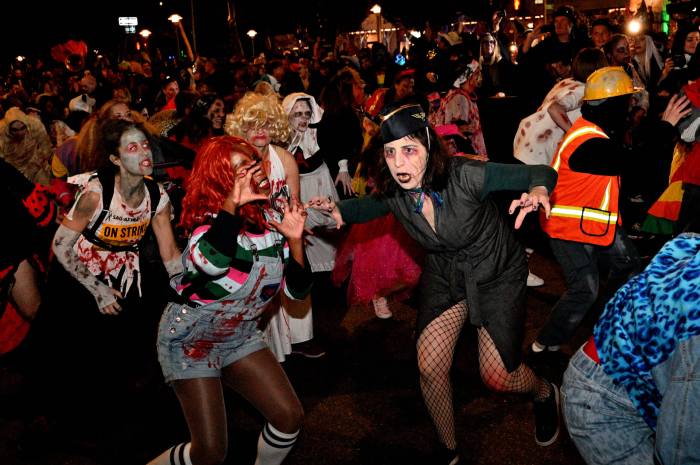Violation: sweet, serious and sensual
When President Clinton was asked whether he had “sex of any kind, in any manner, shape or form” with Monica Lewinsky he answered: “It depends upon what the meaning of the word ‘is’ is.”
As much ribbing as the President received for his parsing of words, a similar sentiment hangs over the fascinating group show, Penetration, currently on view in Chelsea.
“It all depends on what the meaning of the word ‘penetration’ is.”
The show includes work by international heavyweights like Robert Gober, Jeff Koons, Bruce Nauman, Jasper Johns and Andy Warhol, so you know the show is serious. A handful of younger artists, like Ricci Albenda, Sarah Sze and Maurezio Cattelan are included to keep the proceedings lively. The mixture of artists, art practices, sexual politics and cultural preoccupations produces a playful and intriguing show with a surprising breadth and nuance. For every brain-teaser of a piece, see Chris Burden trying to penetrate a 747 by firing a gun at it, there is a playful, even raunchy piece, like Matthew Barney’s creepy set of testicles tied together with string.
Several interpretations of “penetration” are evident in Sze’s “Grow or Die,” a piece that literally penetrates the physical space of both galleries through a hole cut into and through Marianne Boesky’s floor and the ceiling of Friedrich Petzel’s space below. Her cacophonous installation of hundreds of separate parts all combined into a microcosmic world of little, tiny implements includes a piece of thread that moves slowly, almost imperceptibly, through both spaces, hinting at how fragile certain connections, both physical and conceptual, can be.
Used metaphorically, psychologically, figuratively, and/ or literally, penetration is essentially about violability (the ability to be violated). In his installation “Universe (Benny)/ Positive” and “Negative,” Albenda takes Barbara Hepworth’s investigation of positive and negative space to new levels of architectural complication by inserting art into a wall and also extracting a free-standing sculpture from the wall.
Penetration of the flesh in a sexual way is represented by Jeff Koons’ pornographic “Wolfman (Close Up)” an image of the artist having sex with his then wife, Ciccolini, in all their triple-X splendor. Hysterical and ironic, the image is also a bit sexy because Koons looks like such an everyday guy. More subtle, but no less carnal is Douglas Gordon’s video projection, “Blue,” where a finger obsessively pokes, prods, and forcefully invades the tightened enclosure of a fist in a manner that is sensual and violent. Yet sometimes the fit between finger and fist is perfect, the penetration and the withdrawal so effortless that it represents the perfection of coupling.
Building upon Gordon’s strangely erotic and disturbing effort, you begin to appreciate the witty and engrossing correspondences that occur between a sensual aspect of one work and a conceptual aspect of another. Rudolf Stingel’s “Untitled” is a large pink Styrofoam panel through which Stingel has cut out oval shaped holes of various sizes like a huge piece of evenly punched Swiss cheese. There is a sensual element contained in the void provided by these empty holes. The insertion and withdrawal that were necessary to make them become evident because of its close proximity to Gordon’s video and a still from Matthew Barney’s film, Cremaster 4 is on the far wall. Conversely the conceptual weight of Stingel’s work, the fact that it involves ideas of technology and material integrity, makes Koons’ escapades much easier to take in.
Penetration is a show where it is welcoming to see a majority of graphically sexual elements in the work of straight artists rather than gay artists. The curator’s inclusion of some of the best gay artists working today, artists whose work does not contain graphic sexuality but whose inclusion provides a homoerotic subtext (that is just as valid as a heterosexual or art critical one) impressed me the most.
Robert Gober is arguably the most famous and acclaimed gay artist working today, yet he has never produced a work I have seen that included an overtly sexual image. Sexuality and gender are nonetheless relevant in almost all of his work. For Gober, sex is wrapped in a large vocabulary used to explore broader concerns about memory, language and history. For Penetration Gober contributes “Virgin Maquette,” a small piece based on a larger piece that featured an almost-life size sculpture of the Virgin Mary bisected by a culver pipe. The piece here is maybe 18 inches tall and of plaster and plastic. In “Virgin Maquette,” Gober combines personal memory of a Catholic upbringing with physical violation. Metaphorically, the pipe has been described as a passageway to a spiritual or transcendental plane and less a penetration with erotic overtones. But to be honest I’ve always gotten a sensual thrill when viewing a penetration like this—my mind goes “there” with little prompting.
Donald Moffett’s work often involves references to gay culture, sex, and politics (he is a founding member of Gran Fury, the artistic wing of ACT-UP). Here he contributes a series of graphite on paper drawings of soft, fleshy cocks and balls nestled in wispy pubic hair. They are so delicately drawn and ephemeral looking, they are almost touching. They also benefit from more obviously erotic work in the show. For example, Sigmar Polke’s painting on paper “Untitled” depicting a man violently entering a woman from behind, or Louise Bourgeois’ “Untitled” sculpture of small fabric pillows with soft holes in the middle. In between them is enough space to soak in all the visual information, the confluence among all three artists can mesmerize.
The narrative implications between the works become subtly entwined. Bourgeois’ sculptural pillows look ready- made to cradle Moffett’s drawn cocks, and the combination of orifice and phallus is played out in a more explicit way in Polke’s work.

































